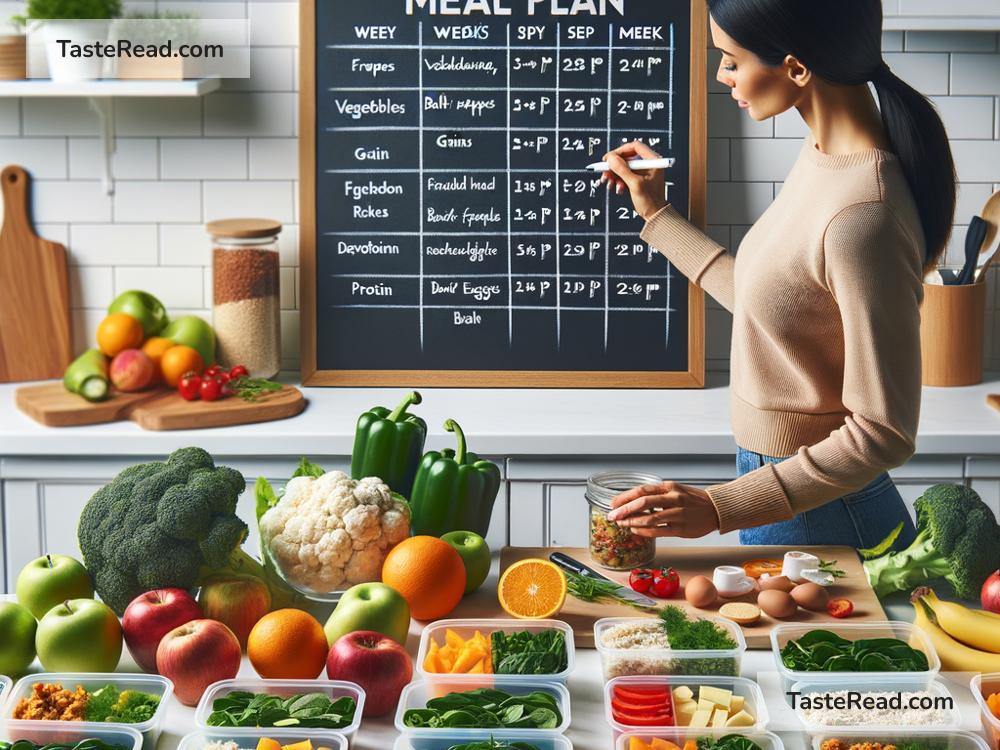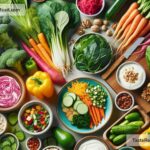How to Plan Meals for Optimal Energy Levels
Feeling tired during the day can be frustrating, especially when you have tasks and responsibilities. But did you know that what you eat plays a huge role in how much energy you have throughout the day? Your body is like a machine, and food is its fuel. When you plan meals thoughtfully, you can boost your energy levels and feel productive from morning to night.
Let’s break down how to plan meals for optimal energy, step by step, in simple English.
1. Start Your Day with a Balanced Breakfast
Breakfast is your first chance to fuel your body after a night’s rest. Eating breakfast helps you wake up and energizes your brain and muscles for the day ahead.
A smart breakfast includes:
– Complex carbs: Foods like whole-grain bread, oatmeal, or sweet potatoes. They release energy slowly, keeping you energized throughout the morning.
– Protein: Eggs, yogurt, peanut butter, or nuts help repair muscles and keep hunger at bay.
– Healthy fats: Foods like avocado or chia seeds provide energy and support brain health.
– Fruits or veggies: Add bananas, berries, or spinach for extra vitamins.
Avoid sugary cereals or pastries—they give you a quick energy boost but lead to a crash later. Instead, aim for whole, natural foods.
2. Eat Smaller, Balanced Portions Throughout the Day
Eating three heavy meals a day can leave you feeling sluggish. Instead, plan for smaller, balanced meals and snacks. This keeps your blood sugar stable and provides steady energy.
Here’s what a balanced plate should look like:
– Half of your plate: Non-starchy vegetables (like broccoli, spinach, peppers).
– A quarter of your plate: Lean protein (like chicken, fish, beans, or tofu).
– A quarter of your plate: Whole grains or starches (like brown rice, quinoa, or potatoes).
– Healthy fats: A sprinkle of nuts, seeds, or olive oil.
When you eat smaller meals every 3-4 hours, you avoid dips in energy and stay focused.
3. Choose the Right Carbs
Many people think carbs cause fatigue, but the type of carbs you choose matters. Simple carbs like white bread, sugary drinks, and candy are quickly digested. They provide a burst of energy but leave you tired shortly after.
Instead, choose complex carbs, which digest slowly and help maintain steady energy. Examples include:
– Whole grains (brown rice, quinoa, or oats)
– Legumes (lentils, chickpeas)
– Starchy vegetables (sweet potatoes, squash)
These carbs keep your energy levels up without ups and downs.
4. Don’t Skip Protein
Protein is important for long-lasting energy because it takes longer to digest than carbs. It also helps keep your muscles strong and your body balanced.
Good protein options include:
– Lean meat (chicken, turkey, or fish)
– Eggs
– Plant-based protein (tofu, tempeh, beans, lentils)
– Dairy products (Greek yogurt, cheese)
– Seeds and nuts (almonds, sunflower seeds)
Add a bit of protein to every meal or snack to avoid feeling sluggish.
5. Include Healthy Fats
Fats often get a bad reputation, but your body needs healthy fats for energy, brain function, and overall health. They’re important for sustaining your energy levels for longer periods of time.
Healthy fat sources include:
– Avocado
– Nuts and seeds (walnuts, almonds, pumpkin seeds)
– Fatty fish (salmon, mackerel)
– Olive oil or coconut oil
Avoid unhealthy fats found in fried foods or processed snacks. Stick to whole, natural options.
6. Stay Hydrated
Food isn’t your only source of energy—water is equally important! Dehydration can leave you feeling tired and foggy. Aim to drink water throughout the day to keep your body running smoothly.
Try these tips:
– Keep a reusable water bottle near you.
– Add slices of lemon, cucumber, or mint to make water more appealing.
– Drink herbal teas or coconut water for variety.
Remember, even mild dehydration affects your energy, so make sipping water a habit.
7. Snack Smart
Snacks can help you stay energized between meals, but only if they’re healthy. Choose snacks that combine carbs, protein, and fat for better energy. For example:
– An apple with almond butter
– A handful of nuts and dried fruit
– Greek yogurt with berries
– Carrot sticks with hummus
– A piece of dark chocolate with walnuts
Avoid highly processed snacks like chips or cookies—they’ll drain your energy after a short sugar rush.
8. Limit Caffeine and Sugar
Caffeine and sugar might seem like easy fixes for low energy, but they can backfire. Drinking too much coffee or energy drinks can leave you jittery and lead to a crash later. Similarly, sugary treats spike your blood sugar and then cause a dip, leaving you more tired.
Instead, drink moderate amounts of coffee or tea earlier in the day, and satisfy your sweet tooth with fruits or small portions of dark chocolate.
9. Plan Ahead
When life gets busy, it’s easy to grab unhealthy foods that leave you feeling tired. That’s why meal planning is key to keeping your energy up.
- Write down your meals for the week.
- Shop for nutritious ingredients in advance.
- Prep your meals in batches so they’re ready to grab-and-go.
By planning ahead, you avoid unhealthy food choices and stick to energy-boosting meals.
10. Listen to Your Body
Everyone’s body is different. Pay attention to how certain foods make you feel. Do you notice a dip in energy after eating a certain meal? Are there foods that seem to give you lasting energy? Adjust your meals to suit your individual needs and habits.
Conclusion
Planning meals for optimal energy levels doesn’t have to be complicated. By choosing balanced meals with complex carbs, protein, healthy fats, and plenty of water, you can fuel your body and avoid the afternoon crash. Snack smart, limit sugar, and listen to your body’s signals. With a little planning, you can feel energized and ready to tackle your day!


